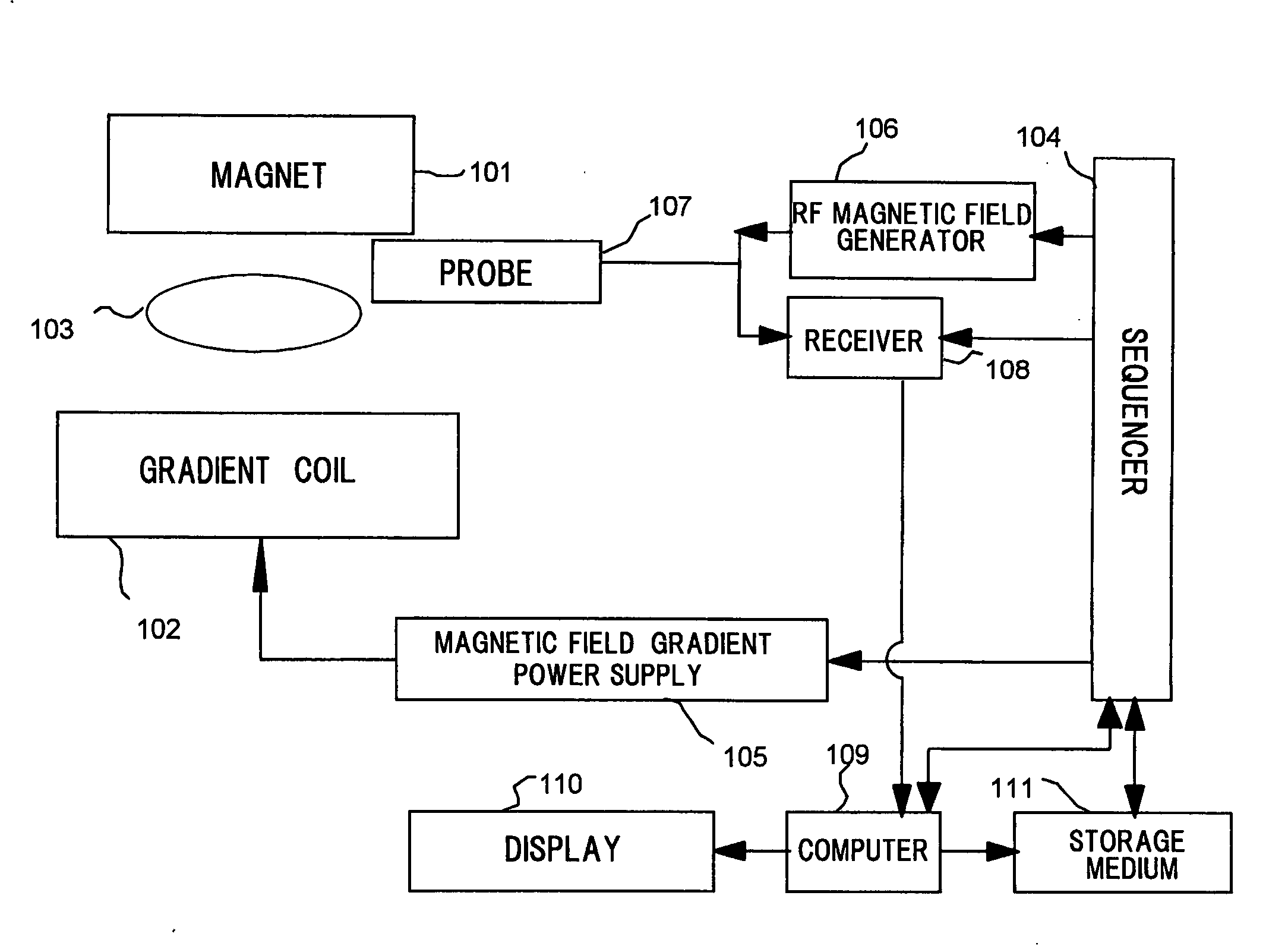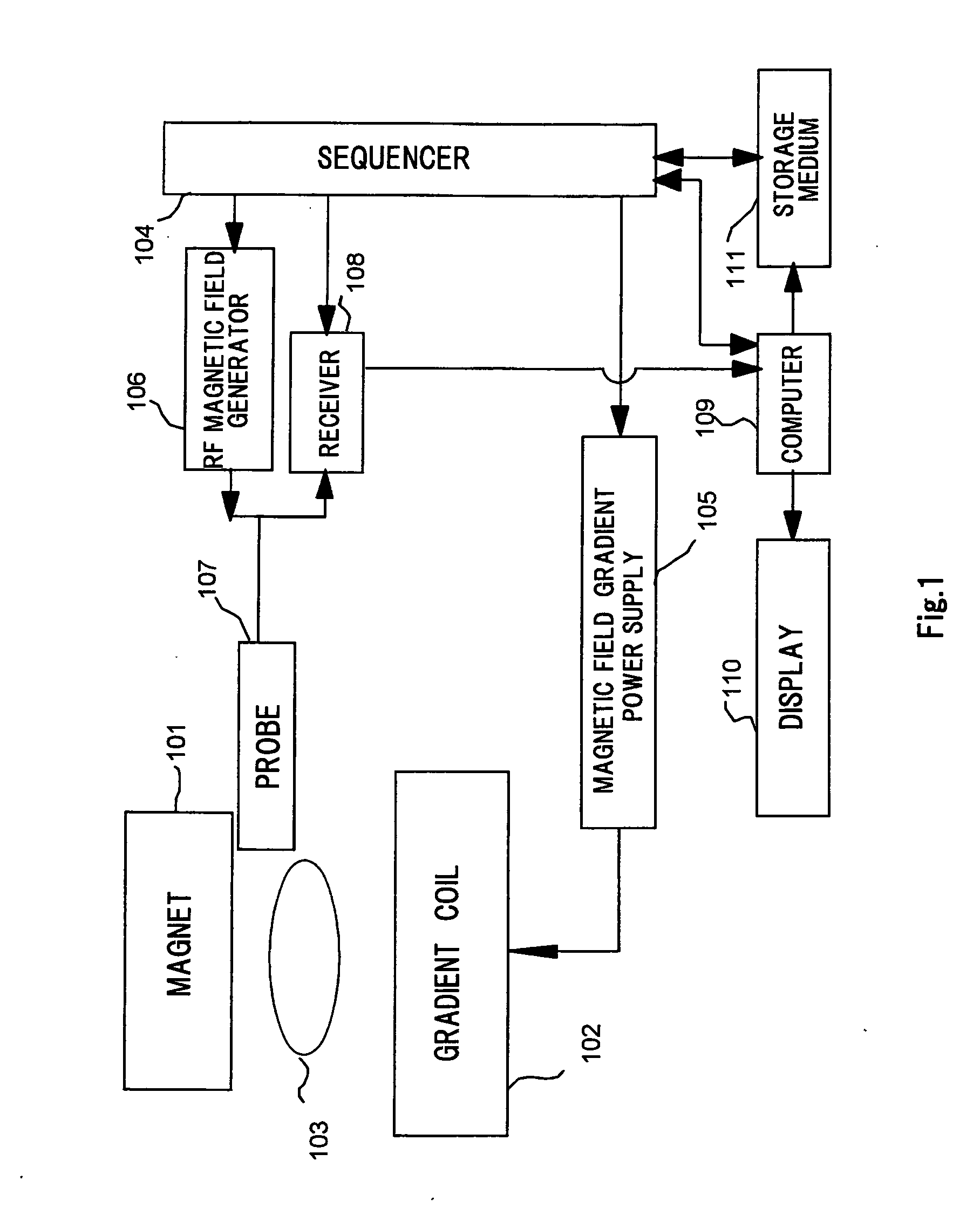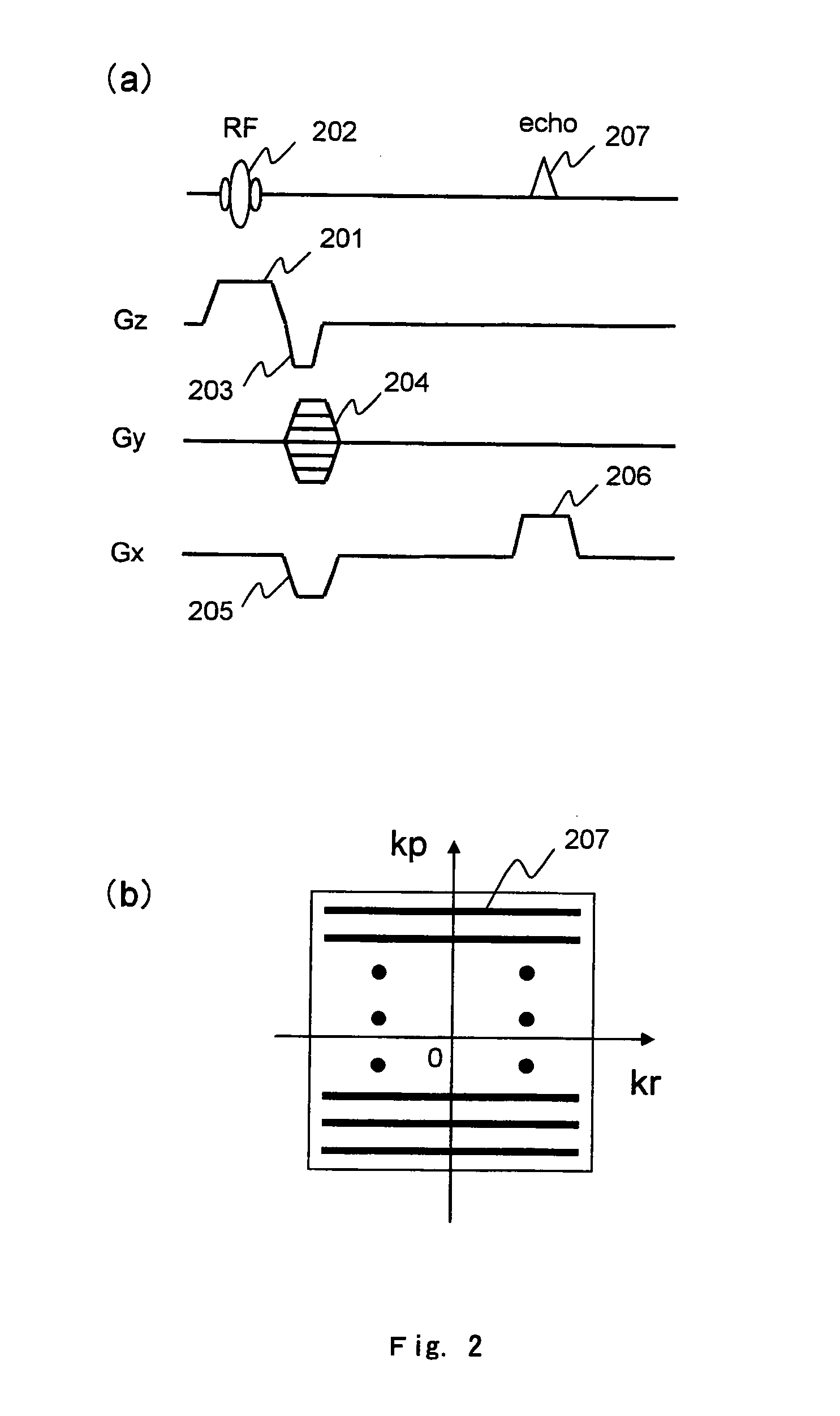Magnetic Resonance Imaging Apparatus
a magnetic resonance imaging and apparatus technology, applied in the direction of measuring using nmr, instruments, magnetic variable regulation, etc., can solve the problem that the intended image contrast may not necessarily be obtained, and achieve the effect of reducing sar, image contrast, and preventing the heating
- Summary
- Abstract
- Description
- Claims
- Application Information
AI Technical Summary
Benefits of technology
Problems solved by technology
Method used
Image
Examples
first embodiment
[0048]According to this embodiment, by changing the flip angle of the RF pulse in the imaging mode in a range of values not larger than the value determined by the flip angle used in the non-imaging mode like the first embodiment, SAR can be reduced, and a favorable image not only free from degradation of image contrast, but also free from influence of flip angle modulation such as unsharpness and enhancement of edges can be obtained.
BRIEF DESCRIPTION OF THE DRAWINGS
[0049]FIG. 1 A block diagram showing total configuration of an MRI apparatus to which the present invention is applied.
[0050]FIG. 2 A drawing showing a pulse sequence for the gradient echo method and k-space.
[0051]FIG. 3 A drawing showing a pulse sequence for the phase compensated type gradient echo method.
[0052]FIG. 4 A drawing showing details of control by a sequencer.
[0053]FIG. 5 A drawing showing flip angle and imaging results for one embodiment of the present invention.
[0054]FIG. 6 A drawing showing flip angles and ...
second embodiment
[0058]FIG. 10 A drawing for explanation of imaging according to the present invention.
EXPLANATION OF NUMERAL SYMBOLS
[0059]101 . . . Magnet for generating static magnetic field, 102 magnetic field gradient coil, 103 . . . test subject, 104 . . . sequencer, 105 . . . magnetic field gradient power supply, 106 . . . radio frequency magnetic field generator, 107 . . . probe, 108 . . . receiver, 109 . . . computer, 110 . . . display, 111 . . . storage medium.
PUM
 Login to View More
Login to View More Abstract
Description
Claims
Application Information
 Login to View More
Login to View More - R&D
- Intellectual Property
- Life Sciences
- Materials
- Tech Scout
- Unparalleled Data Quality
- Higher Quality Content
- 60% Fewer Hallucinations
Browse by: Latest US Patents, China's latest patents, Technical Efficacy Thesaurus, Application Domain, Technology Topic, Popular Technical Reports.
© 2025 PatSnap. All rights reserved.Legal|Privacy policy|Modern Slavery Act Transparency Statement|Sitemap|About US| Contact US: help@patsnap.com



